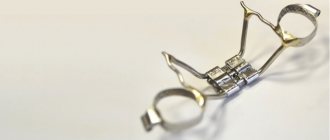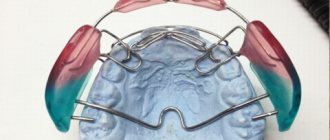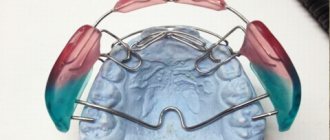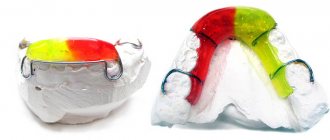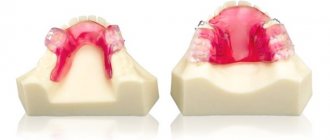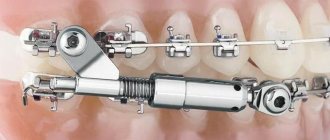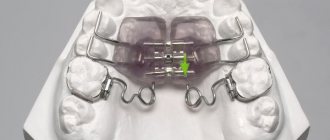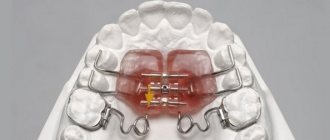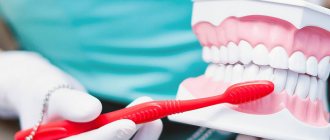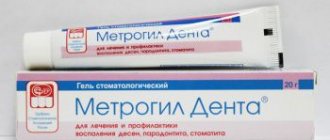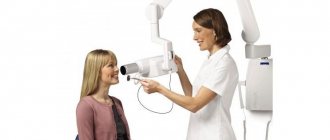The Optodan laser device is reliable, simple, convenient and safe to use. Small dimensions and weight allow it to be used at home or at the bedside of bedridden patients. The capabilities of the Optodan laser device are indispensable when providing medical care to weakened children. Laser light not only fights a specific disease, but also has a beneficial effect on the immune system.
Treatment methods using the Optodan device are based on the mechanism of multifactorial action of infrared laser light generated in a pulsed mode. The Optodan laser device has a resonant effect on the cells of the body, activates and stimulates the functional activity of vital processes, which leads to an increase of up to 30% in the effectiveness of laser therapy. In some cases, the therapeutic effect is solely a consequence of cellular-systemic resonance.
Mechanism of therapeutic action
- Pronounced anti-inflammatory and analgesic effect;
- Improving microcirculation, normalizing the permeability of vascular walls, thrombolytic effect;
- Normalization of metabolic processes, increasing oxygen levels in tissues;
- Significantly accelerates the regeneration of soft and bone tissues, preventing the formation of scars;
- Stimulation of the immunological defense system;
- Reducing the pathogenicity of pathogenic microflora, increasing its sensitivity to antibiotics.
Strength of effect
In studies, magnetic therapy has a greater effect on the nervous and cardiovascular systems. Main effects were associated with decreased pain, anxiety, and improved quality of life. That is, if the problem contains one or more of these components, a positive effect may be noted.
To be satisfied with the result, you cannot have high expectations. Since the mechanism of action of the magnetic field on the body is quite difficult to perceive, misconceptions may arise, the image of a “magic pill” or hope for a miraculous healing may be formed when doctors could not help. Physiotherapy is always combined, and although it may be an important part of treatment, it will not be the only one. A typical example would be the image of an overweight person with knee pain. Courses of anti-inflammatory drugs help with varying degrees of success. One of the key reasons is excess weight, which leads to pain. Buying a device without adjusting your lifestyle and losing weight is unlikely to give the desired effect.
First, you should consult a specialist, follow the recommendations as much as possible, and then with peace of mind you can supplement this with magnetotherapy at home.
Indications for use
To speed up the rehabilitation of patients after surgery, fractures and severe injuries, to exclude purulent complications. With fractures, the rate of callus growth more than doubles, including in older people. The device is highly effective in treating injuries resulting from crushing or squeezing.
For the prevention of venous thromboembolic complications (VTEC) after operations on the lower extremities (hip and knee replacement, metal osteosynthesis of the femur and high limb amputation).
The characteristics of the “Optodan” device provide the basic requirements for preparing athletes for competitions and effectively eliminating the consequences of minor injuries. The use of the Optodan laser device eliminates problems associated with doping control.
For the prevention and treatment of caries in the stage of demineralization and chalk spots, pulpitis, periodontitis, periodontal diseases and oral mucosa, inflammatory diseases of the salivary glands, lymphadenitis, osteomyelitis, etc.
For the treatment of hemorrhoids and rectal fissures (as the main remedy).
In cosmetology, the laser therapeutic device “Optodan” is used both independently and in combination with other means. Preliminary application of cream or other active substance enhances its absorption into the skin (laser phoresis).
"Optodan" is used for:
- Elimination of skin irritation and inflammation after hygienic facial cleansing;
- Prevention of skin aging and the appearance of wrinkles, elimination of dryness and sagging skin, increasing its firmness and elasticity;
- Treatment of pyoderma, furunculosis;
- Accelerating wound healing and preventing scar formation after acne, mole removal, after plastic surgery;
- Treatment of acne and oily skin.
For prevention and treatment:
- Arthrosis, arthritis, osteochondrosis;
- Rhinitis, tonsillitis, sinusitis, tonsillitis, otitis;
- Neuralgia;
- Myocardial infarction, ischemic disease;
- Hypertension;
- Mastitis, prostatitis;
- Hard-to-heal wounds and ulcers, bedsores.
Technical parameters of the device
Treatment using the Optodan (laser) device in dentistry is based on the mechanism of action of infrared light generated in pulsed mode. It has a resonant effect on the cells of the body, has a stimulating effect on important vital processes, thereby increasing the effectiveness of therapy by more than 30%.
Technical parameters of the Optodan laser device:
- pulse frequency - 80-100 and 2000-3000 hertz (two modes);
- pulse width – 40-100 ns;
- pulse energy – from 2 W;
- wave radiation varies in the range of 0.85-0.98 microns;
- voltage frequency – 50 Hz;
- power consumption – from 10 W;
- operates under voltage of 220 Volts;
- working t - 10-350С;
- device weight – up to 1 kg;
- average service life is 5 years.
The laser device is equipped with a zone, magnetic and scattering attachment, a device passport and methodological instructions.
Methods of use
The surface irradiation method is used when affecting the affected surface of the skin (open wound, burn, purulent process, etc.). When irradiating the affected surface, the window of the emitting unit of the device is directed to the lesion at an angle of 90°, at a distance of 5 - 7 mm from its surface. The divergence angle of the laser beam is 36°. Deviation of the laser beam axis from a right angle leads to an increase in the reflection of light energy from the irradiated surface, especially if ointments, gels, etc. were used. The manipulator is moved in a circular motion clockwise over the surface of the wound in the direction from its periphery to the center. If the wound is extensive, then its surface is conventionally divided into fields of 4 - 6 cm2 and each field is irradiated sequentially. The surface of the wound can be irradiated through a gauze bandage no more than three layers thick.
The projection irradiation method is used when it is necessary to expose objects of internal pathology to laser light. In this case, the window of the emitting unit of the “Optodan” apparatus is directed to the projection, for example, of the joint space (arthritis, arthrosis), palatine tonsils (angina) or internal injuries (postoperative, post-traumatic rehabilitation). During projection irradiation, the tip of the manipulator may come into contact with the skin.
The method of non-invasive (percutaneous) blood irradiation stimulates the immune system, has a desensitizing effect, and increases the sensitivity of pathogenic microflora to antibiotics. With non-invasive blood irradiation, the tip of the manipulator is directed to any large vein at the place of its closest approach to the surface of the body. The main indications for blood irradiation are decreased immunity after illness, purulent-inflammatory diseases, burns, etc.
The method of laser reflexology refers to systemic methods of influencing the body’s self-regulation mechanism. The area of influence is reflexogenic zones and points. To conduct a laser reflexology session, a specialized attachment is attached to the “Optodan” device (* on request).
Magnetic attachment
520 RUR
Magnetic attachment - for magnetic laser therapy (magnetic induction of at least 50 mT), used for irradiating tissues of the oral cavity, maxillofacial area and neck with laser light and a constant magnetic field in acute and chronic pathological processes in deep caries, pulpitis, periodontitis, gingivitis, periodontitis, etc.
You can buy this product at a favorable price in the MAXIDENT MAXIGRAD online store in Moscow, delivery throughout Russia
ATTENTION!!! Before purchasing and paying, check availability and prices!!!
LICENSING CLINICS, DENTISTS, DENTAL LABORATORIES, MEDICAL CENTERS, BEAUTY SALONS AND…
RENTAL OF EQUIPMENT FOR LICENSING / RENTAL OF MEDICAL EQUIPMENT t+7-916-016-07-77
EMERGENCY SAME DAY DELIVERY IS POSSIBLE!
SPECIAL SERVICE!!! VIEW TO THE SITE - FULL AUDIT - GENERAL REHEARSAL OF INSPECTION - PREPARATION OF THE CLINIC BEFORE THE INSPECTOR'S INSPECTION
OUR SERVICES :
Licensing of medical activities Licensing of pharmaceutical activities Licensing of a pharmacy, kiosk, warehouse License for a beauty salon License for driver's commissions License for pre-trip and post-trip medical examinations Ambulance license License for periodic and preliminary medical examinations X-ray license, X-ray room license, X-ray room licensing, X-ray licensing We assist in receiving
ASSISTANCE AT DIFFERENT STAGES OF LICENSING. PREPARATION OF DOCUMENTS. TURNKEY REGISTRATION.
DESIGN. DEVELOPMENT OF DESIGN DOCUMENTATION FOR CLINICS.
To apply for medical licensing through the government services portal, for these issues call +7-916-016-99-11
FOR SCHEDULED INSPECTION or call +7-916-016-99-11
REQUEST EQUIPMENT STANDARDS in tabular form or call +7-916-016-99-11
FOR LICENSING by email or call +7-916-016-99-11
REQUEST RENT NOW by email or call +7-916-016-99-11
A course of treatment
Laser therapy is carried out in courses of up to 15 procedures. It is not advisable to carry out a larger number of procedures, due to a decrease in the body’s susceptibility.
Studies have shown that it is optimal to carry out two or three courses of 12 procedures with a break of one month. The positive effect of laser therapy appears after 3 to 5 procedures, but can also occur after completion of the course.
For chronic diseases, it is necessary to carry out preventive courses of laser therapy during the period of possible exacerbation, usually in spring and autumn. The frequency of procedures and the duration of the procedure depend on the disease and method of treatment.
Laser light increases the effectiveness of analgesics and antibiotics. If external agents (ointments, cosmetic creams, gels, etc.) were used before a laser therapy session, then the depth of penetration of the drugs into the tissue increases.
Contraindications
Contraindications for low-frequency magnetic therapy are:
- acute period of heart attacks and strokes;
- coronary heart disease with heart rhythm disturbances;
- pregnancy;
- bleeding.
Also contraindications include epileptic syndrome, fever above 38°C, and severe exhaustion.
High-intensity magnetic therapy is contraindicated in patients with:
- implanted pacemakers;
- epilepsy;
- thyrotoxicosis;
- oncological diseases;
- within 2 months after myocardial infarction;
- systemic blood diseases;
- cholelithiasis;
- bone fractures before immobilization.
Our advantages
Our dental center does everything to ensure high quality care and patient comfort. We use the most modern high-precision equipment, which is periodically updated, tested, and undergoes the necessary adjustment and calibration.
The clinic employs doctors with the highest qualification category, which is your protection from medical errors. When carrying out manipulations, only high-quality imported consumables, implants and correction systems are used. Any dental treatment at the BrainMark Dental Studio clinic takes place without fear or nervous tension for our visitors.
Dental Aspects of Low Level Laser Therapy
Modern dentistry has innovative technologies in the treatment of all kinds of diseases of the oral cavity. Thus, a new and relevant direction – laser dentistry – has become actively widespread in daily dental practice [5]. Currently, in most countries of the world there is an intensive introduction of laser radiation in biological research and practical medicine [1]. The development of modern science and technology has led to the fact that laser devices have taken their rightful place in the doctor’s arsenal in the fight against various diseases. Lasers are widely used in ophthalmology, dermatology, urology, oncology and gynecology. In recent years, semiconductor lasers have become widely used in dentistry. Lasers are comfortable for the patient and have a number of advantages compared to traditional treatment methods [6, 10]. Currently, the advantages of using diode lasers in dentistry have been proven by practice and are undeniable: safety, accuracy and speed, absence of undesirable effects, limited use of anesthetics - all this has ensured gentle and painless treatment, comfortable conditions for the doctor and patient, acceleration of treatment time [7, 8 ]. Gingivitis is the most common periodontal disease, occurring mainly in children, adolescents and people under 30 years of age. The generalized process is characterized by the spread of the inflammatory process to the mucous membrane of the gums in the area of all teeth of the upper and lower jaw [3]. Severe chronic generalized hypertrophic gingivitis (edematous form) requires long-term treatment, which consists of anti-inflammatory therapy, the use of periodontal dressings, gingivectomy surgery with strict adherence to the architectonics of the gingival margin, orthodontic treatment, etc. When the patient has severe inflammatory reactions, corticosteroid ointments are often used (Sinalar, Flucinar, Lorinden, Deperzolon, etc.), which have an antiexudative, desensitizing, antiproliferative effect [3]. Among the pathological processes localized on the red border of the lips, a special place is occupied by chronic recurrent fissures of the lips, characterized by polyetiology, persistent course, relapses, diagnostic difficulties and unfavorable prognosis. An abundant microbial flora supports the existence of the crack and prevents its healing. The oncological aspect of this problem is of particular importance today. It has been proven that long-term chronic inflammatory diseases always precede cancer and are highly unpredictable. Self-healing occurs extremely rarely and is temporary. Traditional treatment (lubricating the lips with corticosteroid ointments, epithelializing agents, etc.) usually gives a short-term effect [2]. An analysis of the literature data on the treatment of diseases of the oral mucosa and periodontium shows that some drugs, especially antibiotics and steroid drugs, change the redox potential of saliva, weaken the activity of lysozyme, promote the development of allergic reactions, and cause a decrease in the body’s resistance to pathogenic influences [2- 4]. In this regard, the search for new, non-drug treatment methods remains relevant. And one of these methods is low-intensity laser radiation (LILR), as an effective therapeutic agent that has a fairly pronounced therapeutic effect in the treatment of a wide range of diseases [5, 8, 11]. Clinical and experimental studies have shown that LILI is capable of stimulating reparative processes by changing the cellular composition in the area of the lesion due to an increase in the number of neutrophils, as well as by accelerating the growth of capillaries and the accumulation of collagen produced by them, on which the activity of epithelization of the wound surface depends; effectively affects acute and chronic diseases of various organs, including the oral cavity, improves microcirculation, and has an analgesic effect. Laser irradiation reduces the concentration of lipid peroxidation products in the blood, activating the antioxidant system, increases the level of catalase in the blood serum, and activates the cellular elements of mononuclear phagocytes, stimulating cell proliferation [4-9]. In practical dentistry, the following types of modern laser technology are most often used [7, 8]: laser physiotherapeutic devices with gas emitters (for example, helium-neon, type ULF-01, “Istok”, LEER) and semiconductor (for example, ALTP-1, ALTP-2, etc.); laser surgical devices (like a laser scalpel) of a new generation such as “Doctor” or a computer-controlled “Lancet” device; laser technological installations of the “Kvant” type for laser technologies for the manufacture of dentures; specialized laser devices such as ALOC for intravenous blood irradiation; laser devices for laser reflexology, for example, the “Nega” (two-channel), “Contact” type. A separate group includes the laser dental device “Optodan” ALSKPT-01, made on the basis of a pulsed semiconductor injection laser emitting light in the infrared (IR) range. The spectrum of positive effects of infrared radiation, which has a high penetrating ability, is represented by anti-inflammatory, decongestant, thrombolytic effects, decreased vascular permeability, normalization of microcirculation, increased partial pressure of oxygen in tissues, bactericidal and bacteriostatic effects, stimulation of general and local immune defense factors [5, 7- 9]. A distinctive feature of this device from well-known domestic and foreign analogues is the laser radiation parameters, which provide a resonant effect on the cell as a biological system with its own frequency of vital activity. The positive properties of the device include the technical characteristics of the device: small dimensions and weight, lack of special protection and grounding measures (in terms of the safety level of laser radiation, the OPTODAN device belongs to class 1 of the “Sanitary norms and rules for the design and operation of lasers” No. 5804-91 , GOST R.50723-94, does not require protection of the patient’s eyes), thermal effects on tissue [8]. The semiconductor emitter of the device generates laser light in the near-infrared region of the spectrum with a wavelength of 0.85-0.95 microns, a power of up to 4 W, with a frequency of 0.8-2 kHz, and has a pulsed generation mode. “Optodan” has two modes of operation: “Mode I” - has an anti-inflammatory effect, improves microcirculation and tissue metabolism; “Mode II” - has a regenerating effect, stimulates cell proliferation. Using the device allows you to quickly and painlessly eliminate various diseases of the teeth and oral cavity, providing the doctor with maximum convenience and patients with safety. Treatment with the device is carried out contactally; the laser can be directed percutaneously, either directly or using various attachments supplied in the kit.
The purpose of our study was to determine the therapeutic effectiveness of laser therapy using the Optodan device in patients with inflammatory diseases of the periodontium and oral mucosa.
Materials and methods of research: 41 patients aged 16-25 years were observed, including 25 (61%) patients (16 men, 9 women) with an edematous form of hypertrophic gingivitis of varying prevalence, mainly I and II degrees of severity and 16 ( 39%) patients (9 men, 7 women) – with chronic lip fissure: central lower lip – 11 people; lateral cracks of the upper lip – 4 people; angular cracks – 1 person. Using a random sampling method, patients in each nosological group were divided into two groups - No. 1 “main” and No. 2 – “comparison group”. Patients in group No. 1 received physiotherapeutic treatment with a laser dental device "Optodan", and patients in group No. 2 did not receive laser irradiation. The condition of periodontal tissues and the red border of the lips was assessed using generally accepted clinical, functional and laboratory methods. Complex therapy for the edematous form of hypertrophic gingivitis included local antiseptic treatment with a 0.06% solution of chlorhexidine digluconate, careful removal of supragingival dental plaque, applications of maraslavin, heparin ointment, and indomethacin ointment. Loratadine, Escusan and movalis 7.5 mg were prescribed orally for 3-5 days. All patients with a chronic fissure of the lip were prescribed complex treatment (Aevit capsules, Methyluracil tablets, Kamistad gel, fissure blockade with 0.3 ml of 1% lidocaine solution, heparin applications, Clotrimazole suspension, Propolis ointment). Laser therapy was included as part of complex therapy for each nosological form, after thorough sanitation of the oral cavity, taking into account indications and contraindications for laser therapy. Physiotherapeutic treatment was carried out using a laser dental device "Optodan". Treatment procedures for gingivitis were carried out using a scattering nozzle, using frequency “Mode I” - 7 procedures daily until the inflammatory phenomena disappeared. Exposure – 2 minutes on the field. In the group with a chronic fissure, laser irradiation was carried out according to the following scheme: “Mode I” - 2 minutes on the field daily (7 sessions); “Mode II” - 2 minutes on the field every other day (8 sessions). The effectiveness was assessed based on the data of an objective examination, the rate of epithelization, a decrease in the degree of infiltration, the speed of relieving muscle tension in the perioral region, as well as the dynamics of index assessment indicators (Green-Vermilion hygiene index) of the hygienic condition of the oral cavity and the degree of inflammation in the periodontium (steepling phenomenon, PMA index, Mulleman-Cowell bleeding index).
The results of treatment showed that the inclusion of low-intensity laser therapy using the Optodan device in the complex therapy of the edematous form of hypertrophic gingivitis has a pronounced anti-inflammatory and decongestive effect, which was confirmed by the subjective sensations of patients, objective examination data and reliable dynamics of quantitative and qualitative. Thus, 84% of those examined noted a decrease in pain, gum bleeding during brushing (Mulleman-Cowell index - 0.29±0.17) and an aesthetic effect (restoration of the shape of the gingival margin due to reduced swelling) at the 3-4th session, in 72% of patients Positive dynamics of the stealing phenomenon was noted at the 4-5th session of laser therapy, which was confirmed by the PMA index (14.3±0.02). In the comparison group, to achieve similar values of the index assessment indicators, it was necessary to include steroidal anti-inflammatory drugs (flucinar-gel) in complex therapy, and the average duration of therapy was 1.5 times longer compared to the main group. Positive dynamics were also noted in patients of the main group with chronic lip fissure. Thus, muscle tension went away on day 2 after the start of irradiation, and in the comparison group the spasm remained throughout the entire course of treatment; complete epithelization of a chronic lip fissure in the main group was observed on days 3-5, in group No. 2 – on days 5-6; hyperemia and infiltration in the group using low-intensity laser therapy disappeared on days 2-3, in the comparison group they persisted for up to 4 days. Thus, the use of low-intensity infrared laser therapy in the complex treatment of inflammatory periodontal diseases has a pronounced anti-inflammatory effect on periodontal tissue, reduces the duration of treatment, and in some cases avoids the prescription of steroid therapy in the treatment of hypertrophic gingivitis, which confirms the prospects of its use for the complex treatment of diseases periodontal The use of low-intensity IR laser radiation in the complex treatment of patients with chronic lip fissures helps to reduce the time for complete epithelialization of the fissure, the disappearance of infiltration and hyperemia, and the relief of muscle tension in the perioral region.
Advantages of laser dentistry
One of the most important advantages of dental laser equipment is the absence of mechanical impact. Unpleasant sensations typical for treatment with a drill are eliminated, as is the occurrence of microdamages associated with vibration.
All operations are silent, but it is the buzzing of the drill that often puts patients in a stressful state.
With laser treatment of soft gum tissue, the incision sites are scarred much faster than with conventional surgical methods, since the incision is sterilized and instantly sealed. The duration of all operations is significantly reduced.
The laser has a powerful healing effect when removing a tooth. The operation itself is performed with conventional instruments, like any other extraction, but the tissue flaps cut by the beam are minimally injured, which significantly reduces the intensity of bleeding and speeds up healing.
The laser is also used in prosthetics to form a ledge above the gum, where the tooth tissue passes into the crown. The line turns out very clear, and the result pleases with its high quality.
The main advantage of using a laser in implantology is the precise thinness of the beam, which narrows the size of the surgical trauma inflicted on the patient. Damaged capillary blood vessels are sealed instantly due to targeted thermal effects.
Laser whitening is based on the principle of splitting pigments in dentin, which leads to almost complete discoloration of all coloring substances deeply embedded in the enamel structure.
